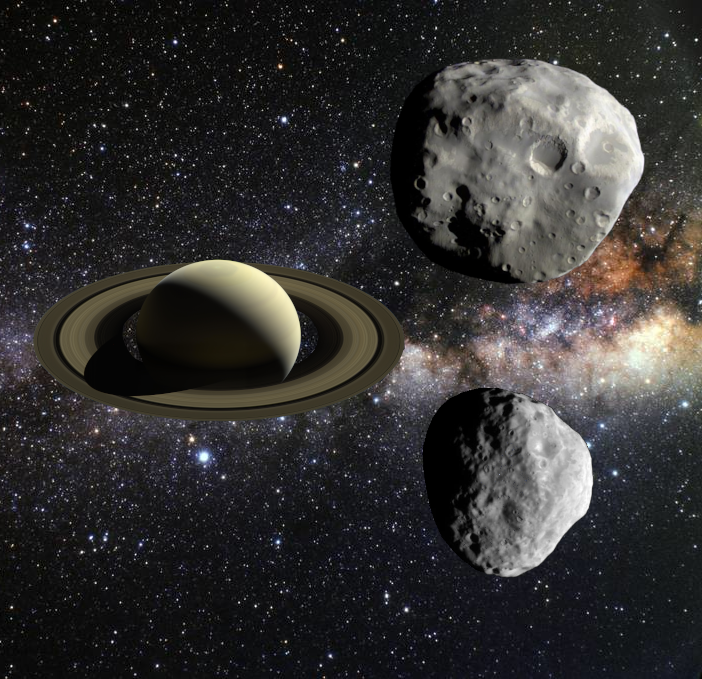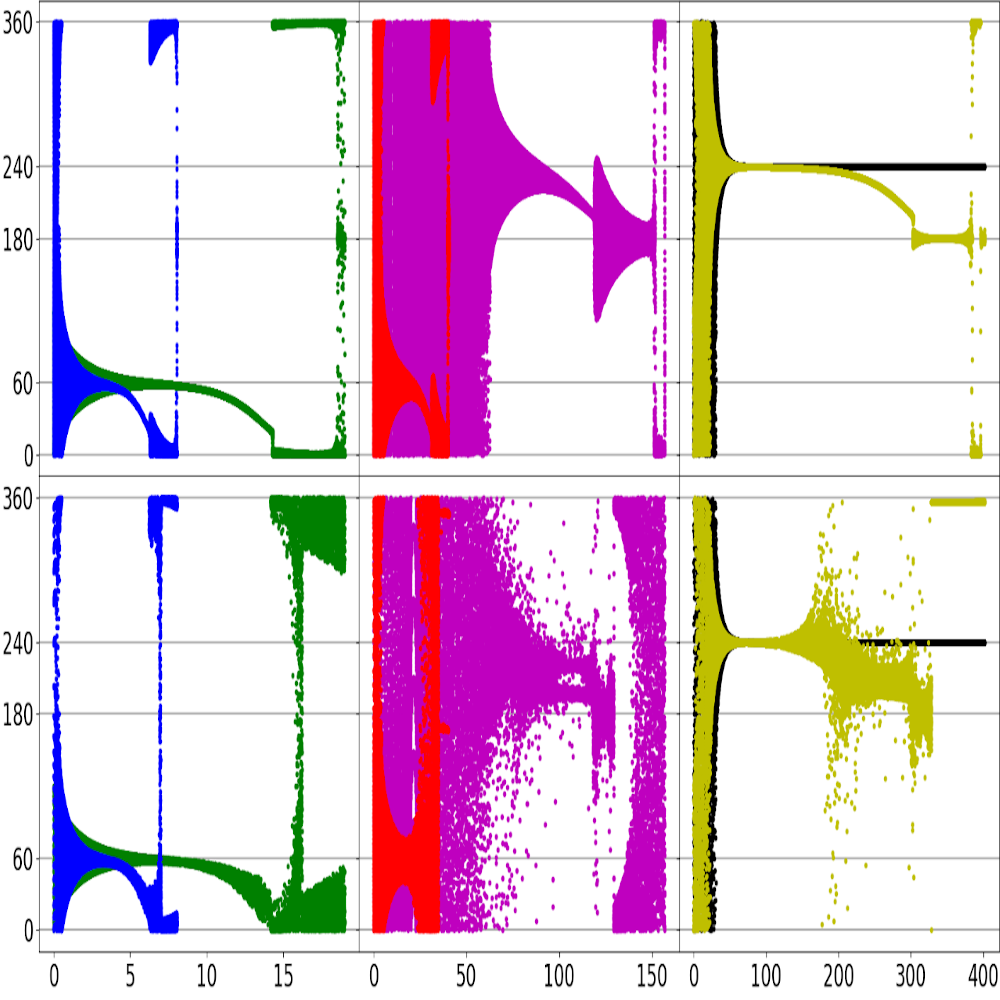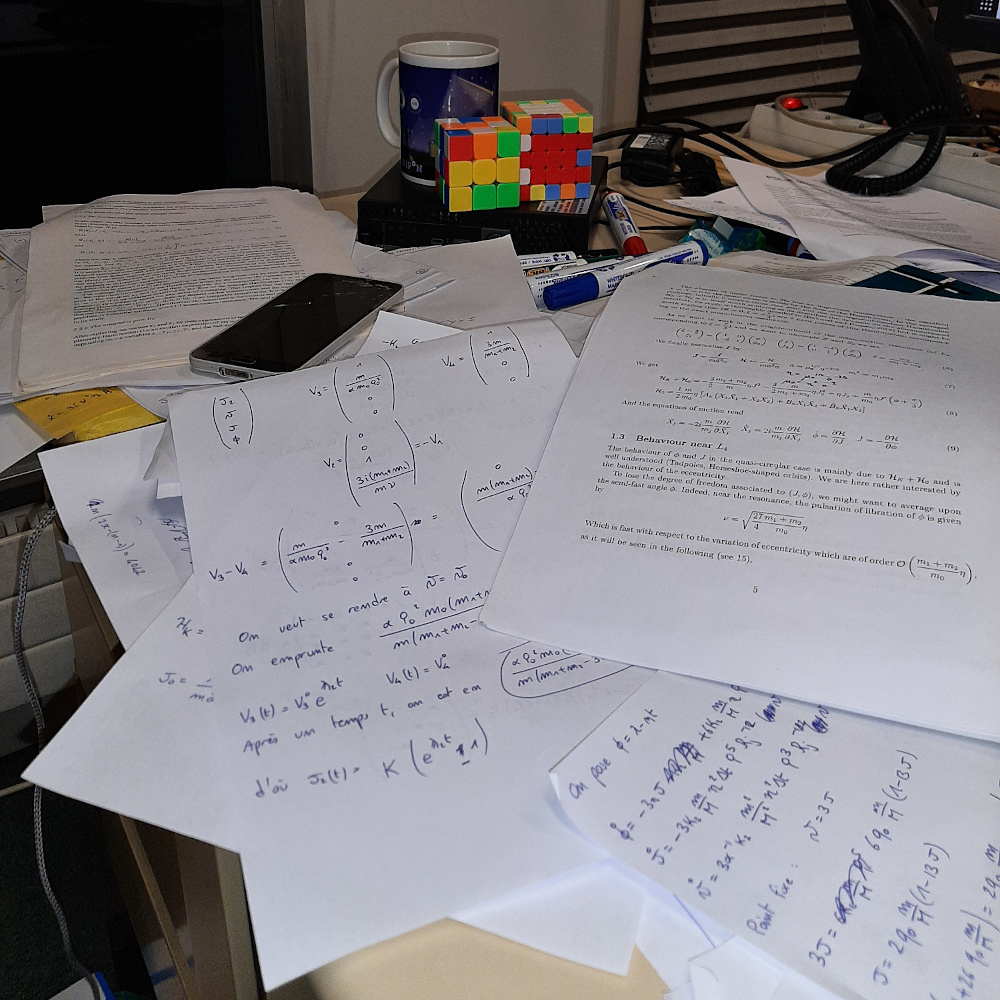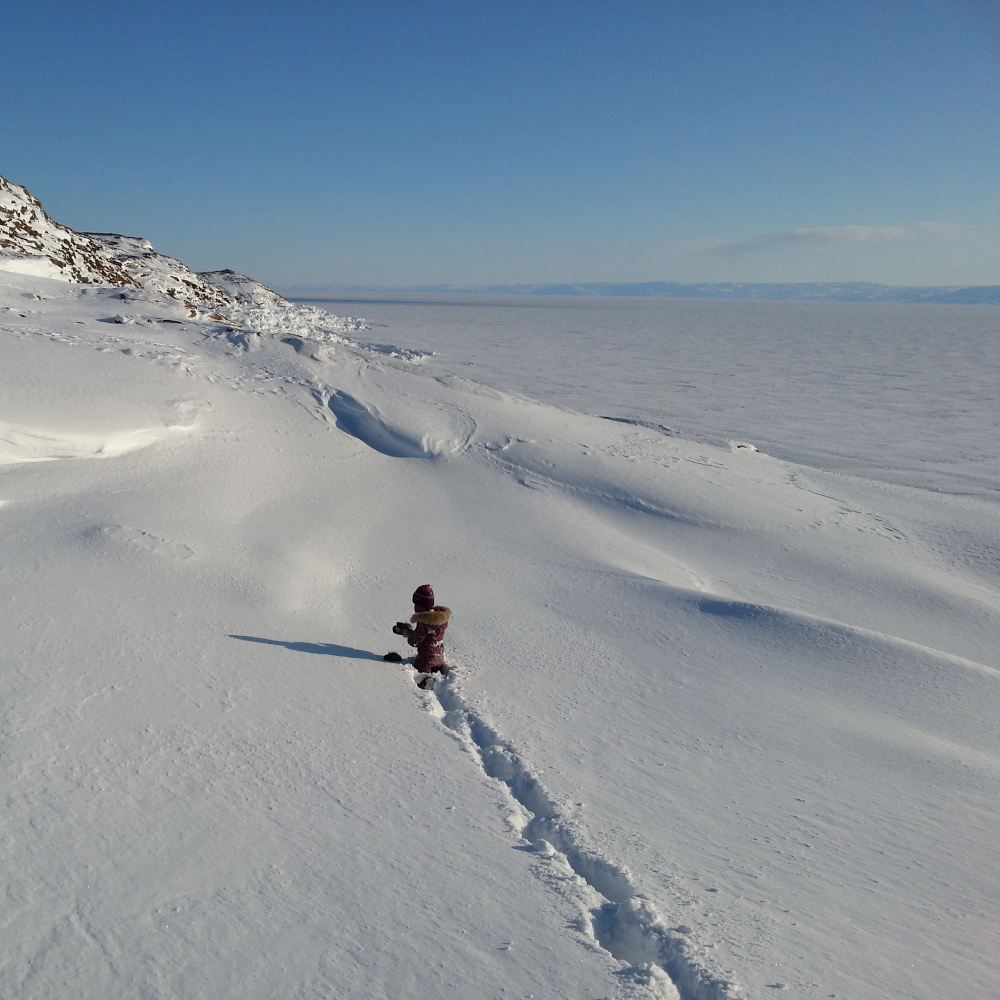2019-2022
All over the World
The co-orbital motion
My PhD was dedicated to the study of the co-orbital motion. This type of motion occurs when two celestial objects, that can be planets around a star or satellites around a planet, share the same orbit. Specifically, my work consisted in understanding what was the long-term behaviour of these systems when they can be deformed by tides. I published two first-authors papers on the subject, available in the tab Publications. You can read here a vulgarization article (in French) about my first paper.



